Options for beautiful cladding for wooden houses: features of choice and use
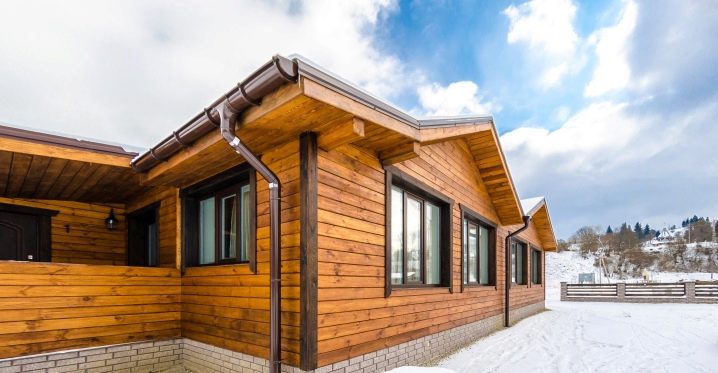
During the construction or restoration of a country house, one of the main roles is assigned to the outer cladding of the building. The appearance of the building depends entirely on it, as well as various technical characteristics, each of which is of no small importance.
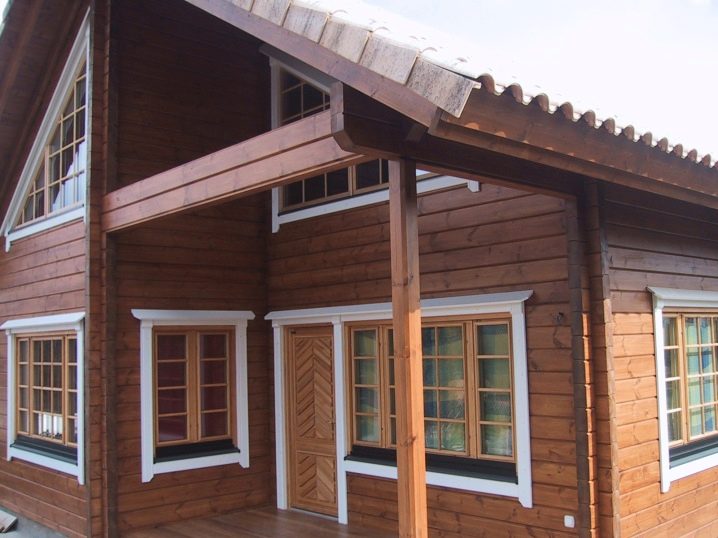
General properties and characteristics
The construction business and the introduction of the latest innovations into it are moving forward. Natural wood as a material for cladding country houses and cottages still remains one of the most popular and in demand building materials.
Often, builders, using wood as a cladding material, can resort to facing the outside of the house. This allows you to achieve a beautiful, visible result, create the look of a "Russian hut" and sheathe the house with the highest quality. There are many reasons, referring to which it is safe to say that cladding a house is a desirable and sometimes mandatory building procedure.

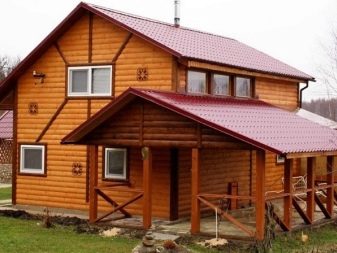
In addition, there are a number of factors and prerequisites that should be considered when choosing a cladding material:
- Unfavorable climatic factors can always contribute to breakdowns and some kind of destruction. To avoid this, it is recommended to resort to house cladding, mainly with additional protection against soaking with sedimentary moisture and condensate.
- Thermal water and vapor permeability must be excluded, thereby providing the house cladding with material that assumes high-quality heat and waterproofing.
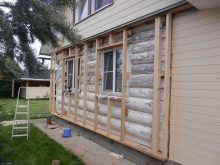
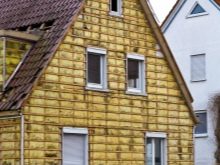
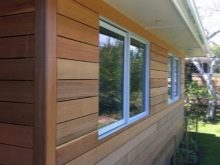
- Noise can also often interfere, so it is worth choosing a material with good sound insulation.
- It happens that over time, the paneling often loses its former attractive appearance due to fading. To prevent an undesirable situation, it is recommended to choose a cladding material that will firmly react to the influence of sunlight and ultraviolet rays.
- The fire can overtake at any moment. To avoid this, there are materials for cladding home, the use of which will secure and protect the home from open fire.
- Specialists often put forward material requirements that ensure ease of installation, as a result of which the use of special equipment is unnecessary.



The best option, according to the builders, is the choice of facing material, which mainly performs protective and aesthetic functions.
However, home owners often have to choose between reliability and aesthetics, since it is quite difficult to find a material that meets both characteristics.
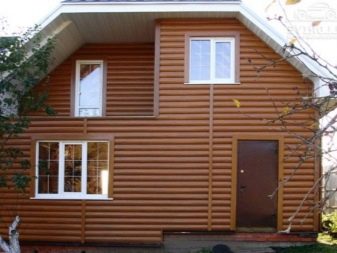
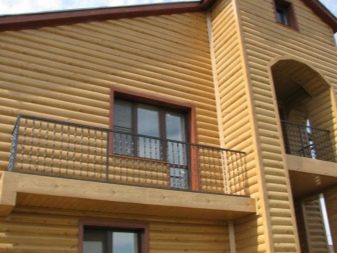
Facade finishing requirements
In order to increase the life of the dwelling, it is worth taking care of the possible influence of unfavorable external factors and ensuring the protection of the supporting structures. Good thermal insulation and vapor barrier, excluding the possibility of moisture penetration into the middle of the house, as well as its evaporation outside are the main goals of a well-assembled house facade. Do not forget that the facade is necessary not only to protect the entire house, but the building itself must protect the structure of the facade.That's why the design of the building itself is the most important aspect in the planning of the entire installation.

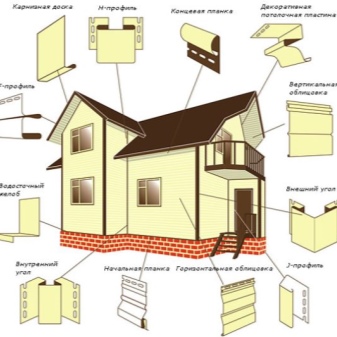
When decorating log walls of a building, several insulation materials are most often used at once in order to provide the best insulation.
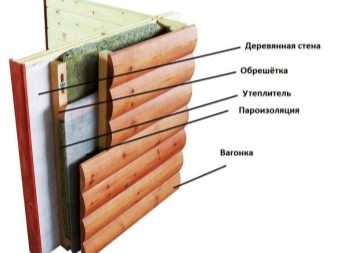
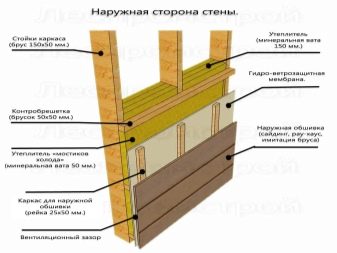
Weather conditions and various external factors pose a great danger to the facade during the implementation of finishing work. Otherwise, you will have to return to repairing the facade every year, and the process is complex and very painstaking.
So that the facing of the logs of the dwelling being erected does not suffer, it is necessary to pay special attention to the various means of chemical protection in order to prevent the influence of rain, wind, frost and other climatic factors. So that the sun's rays do not have a negative effect on the cladding, after building a house from a rounded beam, you can also resort to using acrylic paint over the facing material.
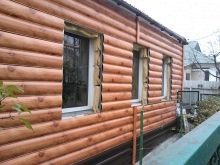
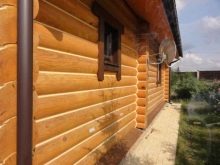
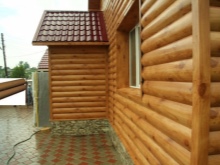
Popular types
Block house
Among modern materials for facade cladding, one of the first positions is occupied by a block house, which is shown by statistics and consumer reviews. This type of cladding is especially popular in Canada and Northern Europe. The block house is used not only for cladding facades, but also for interior decoration. It is a cladding board that looks like a log house.
When choosing a board for cladding, you should pay attention to the growth rings: the closer and closer they are in relation to each other, the better and better quality the wood is.

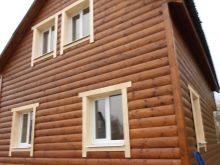
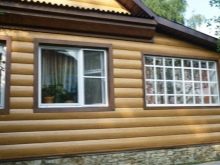
In addition to the fact that the block house belongs to the most economical options, it is also an environmentally friendly material that has characteristic features and advantages, namely:
- durability... The cladding does not crack or deform. Manufacturers guarantee that cladding with block-house lath and corrugated board will retain an attractive and aesthetic appearance for many years;
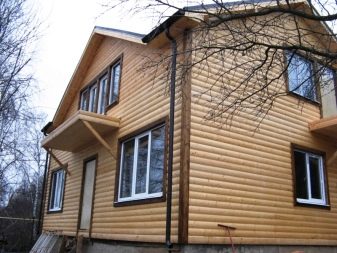
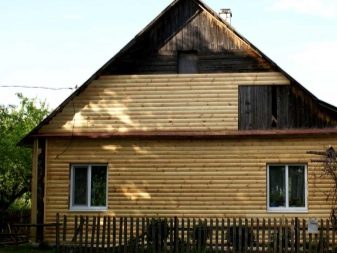
- a block house is often sheathed if necessary to hide construction defects;
- this material is not characterized by mold, fungi and any decay;
- installation of a facade with a rail and processing it by means of a block house does not imply special knowledge, and also requires a minimum amount of time and effort;
- the material has excellent waterproofing properties, especially the pine block house, which is initially required to be processed.
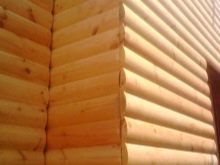

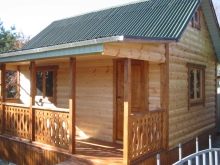
Of the negative aspects of using a block house, the following can be distinguished:
- high flammability, since wood is used for its manufacture, which is prone to fires;
- the material has a low vapor permeability, as a result of which there is a high risk of condensation.
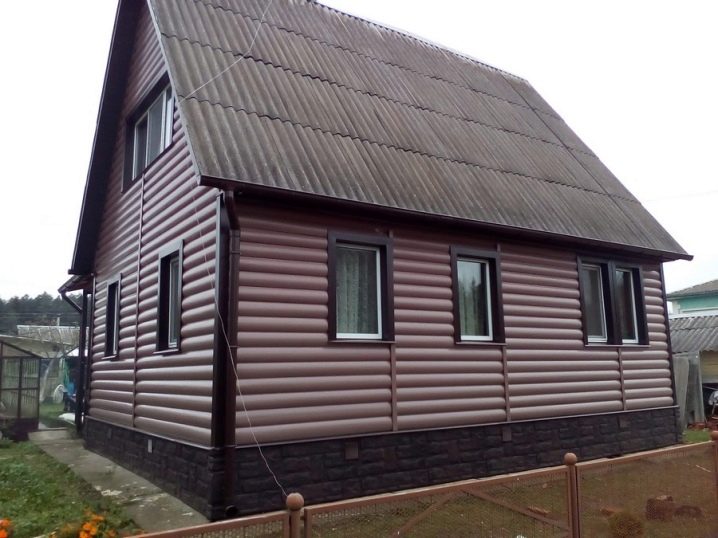
Lining
A good option when choosing a material for cladding the facade of a house is clapboard. It has high sound and heat insulation, and also gives the structure a decorative effect. This material has such obvious advantages as:
- durability, since it does not give in to rotting under the influence of external factors, is not affected by a humid environment;
- provides an aesthetic appearance of the building.
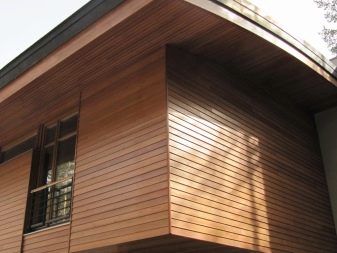
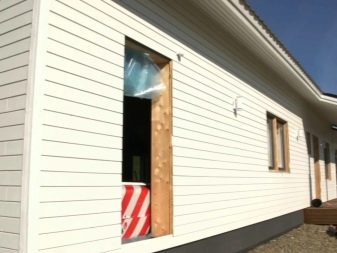
However, there are also negative features of this choice, namely:
- needs careful care;
- has a high price;
- has low fire resistance;
- to maintain a presentable appearance, periodic painting is necessary.
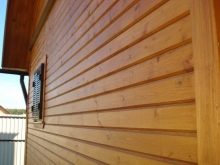
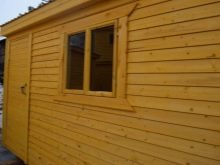
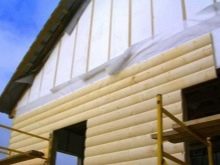
Brick
Another popular material preferred by many builders for cladding rustic dwellings is brick. The final cladding of the facade with bricks will give the structure the most aesthetic and well-groomed look, however, it is worth noting that this is a rather expensive pleasure, and not everyone will have to afford it. Alternatively, you can always resort to using brick facade panels. Cladding the house with bricks is pretty good since this material has the following advantages:
- the brick is not influenced by weather conditions and other external factors that can lead to material decay;
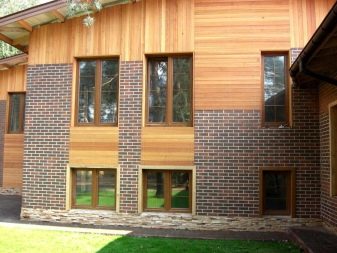
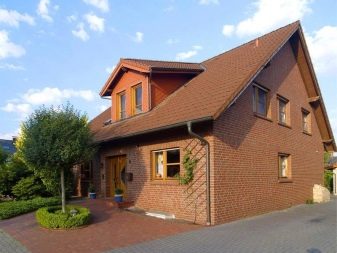
- the brick is not flammable, however, the effect of fire reduces the level of its strength by more than 50%;
- the material is characterized by good sound insulation.
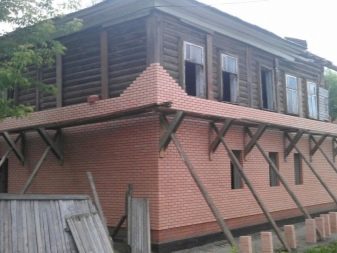

Among the properties of bricks, there are also negative points, such as:
- has low heat-saving characteristics, as a result of which it is necessary to use additional insulation during the construction process;
- high price.
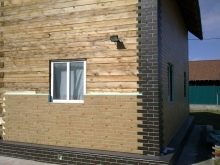
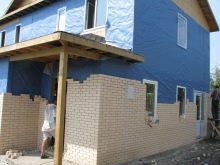

Porcelain stoneware
Porcelain stoneware is a popular material for cladding the facade of a house, which protects well from natural influences and external factors. Finishing with this material has an attractive and modern look. Porcelain stoneware has the following advantages:
- possesses moisture-absorbing properties, which makes it unaffected by moisture;
- mechanical stress does not pose a danger to porcelain stoneware due to its characteristic strength and hardness;
- is non-combustible and monolithic. Its construction is solid and does not involve cracks.
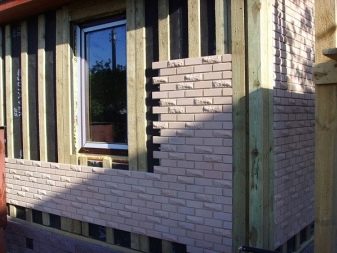
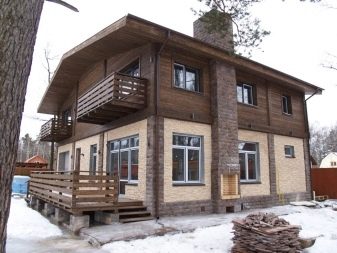
However, despite a number of advantages, the following disadvantages of this material should also be noted:
- has a high cost and is not an economical solution;
- characterized by a complex and lengthy installation process.
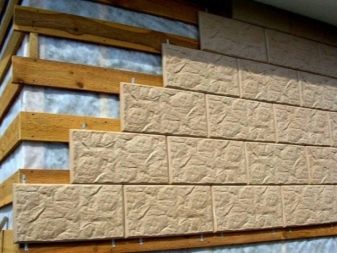
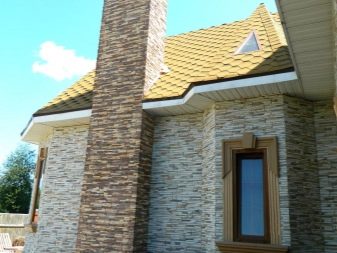
Clinker tiles
Clinker tiles are another material that is ideal for decorating a building façade in a stylish and attractive way. In addition to the aesthetic and presentable appearance, this material will also provide protection from external factors and weather conditions, therefore it is distinguished by its durability and quality. For the manufacture of clinker tiles, shale glycine, flux and coloring pigment are used.
Manufacturers are faced with an important task to prevent even the slightest failure and to carry out the work efficiently. Otherwise, deformation of the material will occur, and the result of work on the product will noticeably deteriorate.

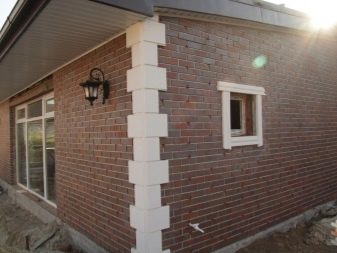
Many builders give their preference to clinker tiles, because this material is in great demand due to a number of such obvious advantages as:
- the use of clinker tiles provides a long service life due to its useful properties and high quality;
- this material will not deform as a result of the influence of severe frosts and sudden temperature changes due to the low level of moisture absorption;
- this material is good for its unpretentiousness and does not require special care, since little dust settles on the surface, and moss and lichens rarely appear.
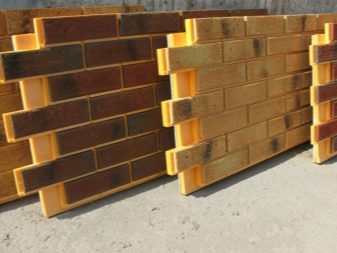
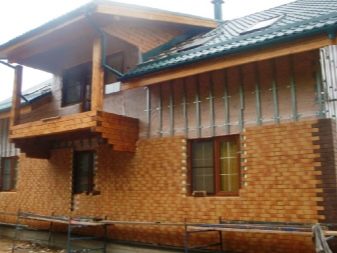
The negative characteristics of this material include the following:
- special fragility, since the clinker is made of ceramics;
- high price.
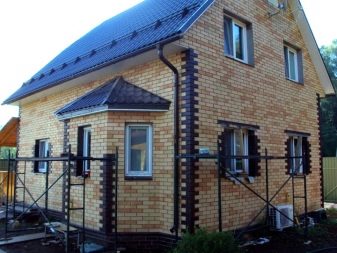
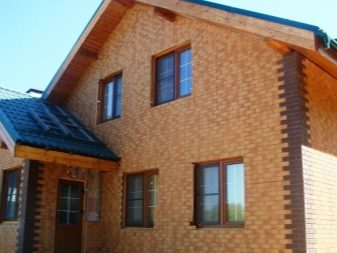
Siding
There are many popular materials for cladding and restoration of a country house, from corrugated board to siding. When resorting to the exterior cladding of houses, builders often opt for siding. Aesthetic appearance, high-quality thermal insulation and high strength provide this facing material with an honest and good name in the market. In appearance, siding is a narrow strip-like panel with a punched edge and fastening in the form of a lock. It is often used in cases where it is necessary to hide any construction defects and damage.
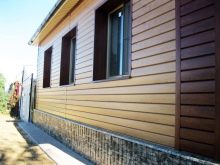
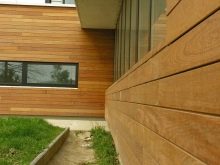
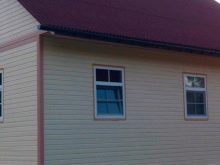
There are the following types of siding:
- vinyl;
- wood;
- cement;
- steel;
- aluminum;
- ceramic.
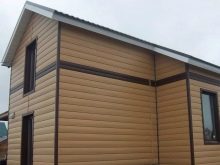
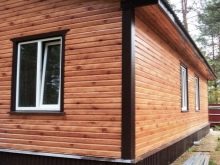

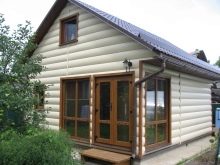

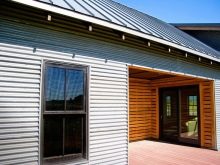
Siding has a number of advantages that describe its positive characteristics, namely:
- it retains its expensive and aesthetic appearance for half a century, which speaks of its durability as a material. In addition, in the presence of siding cladding, permanent painting of the coating is not necessary;
- when choosing a siding with installation, it is unlikely that any problems will arise, since the design does not imply complex work;
- in case of contamination of the siding material, it can be easily cleaned with ordinary water.
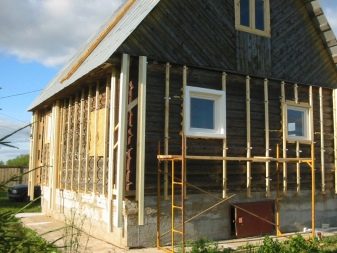
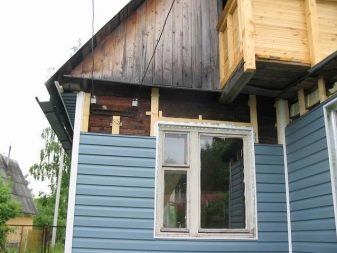
Siding also has such negative qualities as:
- most of the coatings are subject to mechanical stress;
- does not have a wide range of colors for every taste;
- high price;
- vinyl siding sheets become brittle in extreme cold.
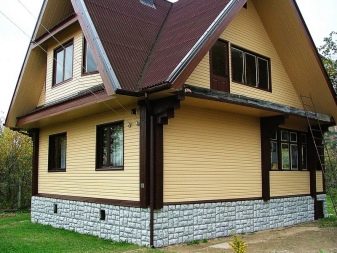

For combined buildings
A combination of facades is a great way to create an original, stylish and unique structure. Combined facades are divided into functional zones and blocks in accordance with the different facing materials used. Having certain design ideas, you can realize a unique idea, transform or recreate an interesting style of the facade of the house.
Today, the homogeneous finishing of facades with cladding material has been quite successfully replaced by a combined one thanks to creativity and good architect's imagination. In order to implement the combined cladding, at least two types of finishing materials are used.
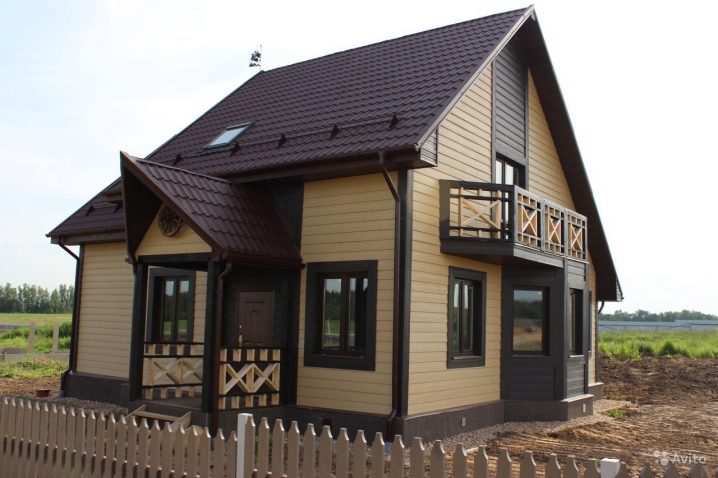
Combined cladding of facades of a country house has a number of undeniable advantages, namely:
- if you correctly combine and plaster the facing materials, you can easily change the visual perception of the structure: lengthen, reduce, expand;
- this type of installation is not time consuming, does not involve high costs due to the fragmentary use of expensive high-quality materials;
- individual and original facade of the house is provided.
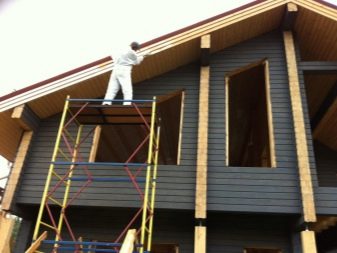
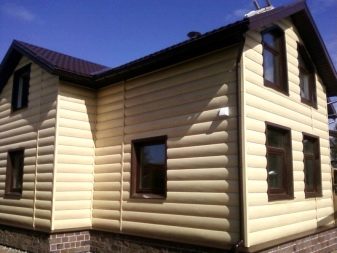
There are many types of combinations of different materials, among which the following are worth highlighting:
- finishing of different floors with various materials is welcomed if the house being designed is a multi-storey building;
- it will look good if you whitewash and emphasize some parts of the building by combining cladding materials around the entire perimeter of the house.


Attention should be paid to the two existing technologies for the combination of materials.
Vertical technology involves the use of materials in contrasting shades. The aesthetic appearance provides the design of the entire facade with one material, and the design of any parts and elements of the structure, window or door openings with another.
The horizontal technology for the design of combined facades is a direct selection of the horizontal parts of the facade, plinths, floors, and roofs. Most often, this technology is carried out with a combination of specific materials: stone and wood, brick and wood, and sometimes even tile and wood.
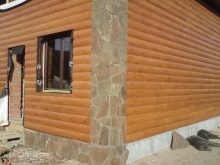
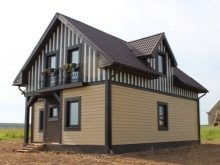
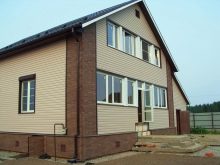
Installation methods
Any installation begins with the creation of a drawing and a project, the necessary markup, a plan necessary for an accurate representation of all further construction work. The preparation process begins with such preliminary work as leveling the walls, removing defects and various existing roughnesses on the surface. This is directly related to the creation of the lathing, whereby a distance of 5-7 cm is formed.
Thus, all unwanted defects and irregularities will be hidden and will not remain noticeable. After creating a project, focusing on it, mark the walls, install existing profiles and beacons.
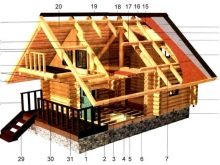
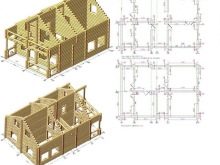
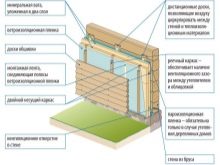
It is necessary to mount the brackets so that the vertical step does not exceed 80 cm, and the horizontal step does not exceed the total value of the assembly joint and the slab width.
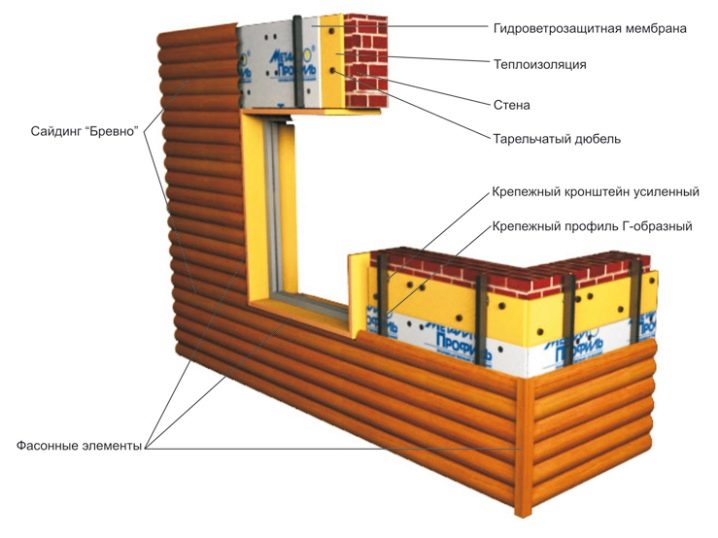
One of the most important aspects of a well-executed facade installation work is good thermal insulation, after all, this is a very significant thing that helps to significantly save money and not go broke on heating a country house. Directly for these purposes, special insulation plates are used, attached to the wall with the necessary fasteners.
It is important that there is not even the smallest distance between the wall and the insulation itself.For the most part, the fastening of the insulation layer is carried out by means of screws with a wide head or dowels. The distance from the insulation layer to the future coating varies within 50 mm.
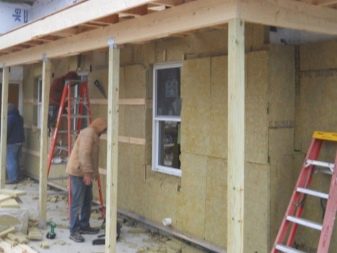
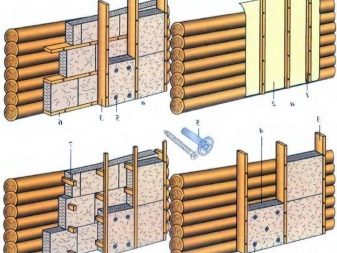
A very important step during installation is the blow-out protection.
For this purpose, a special windproof membrane is used, which is installed on top of the insulation layer itself. An important aspect is the need to cover the load-bearing profiles. For this, a plumb line is used, and it is important to control the distance between them. Fastening of profiles is often carried out by using self-tapping screws for metal with a press washer.
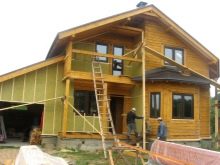

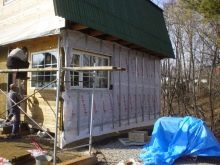
Next, there is the fastening of the panels themselves, the selected material for decorating the facade of a private house. For fixing the panels to the bearing profiles, special clamps or other devices are required. Their choice depends on the material used. The complexity of the installation of the facade of a house or the reconstruction of an old building depends on the facing material itself.
In order to achieve the maximum quality result, it is necessary to observe a clear sequence of performing the assigned points. Otherwise, obvious defects and defects are likely to occur.
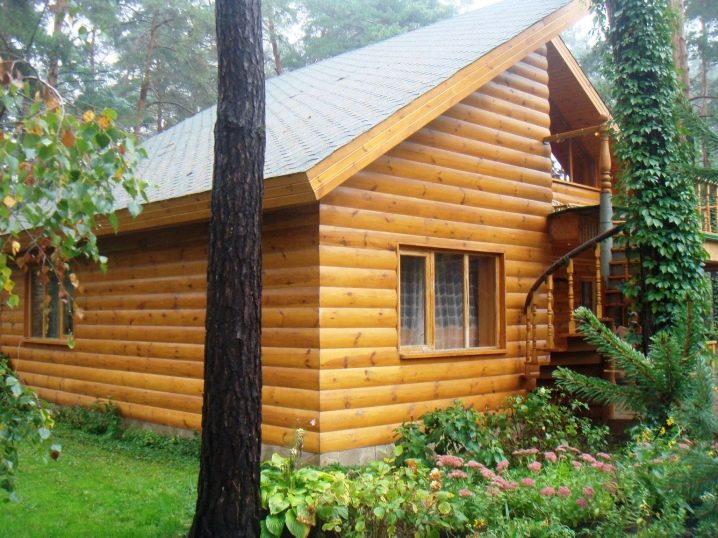
Interesting ideas
Facade decor is far from the last thing in the conditions of modern construction. It is necessary in order to hide existing defects and imperfections in construction work. The decor is also often used to update the appearance of a country house, restore it and achieve greater attractiveness. The structure can be given a Gothic, Scandinavian, Byzantine look. It all depends on the desires and design imagination. Some practical aspects are an important argument in favor of decorating the facade. For example, insulation.
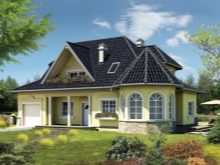
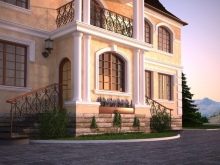
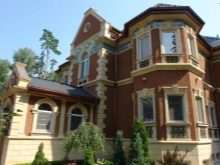
Currently, he identifies several of the most popular preferences for decorating the facades of private houses.
Decor of curved and frame facades
As a result of the past years, there has been an increase in the demand for various curved and frame facades, for the manufacture of which high quality MDF is used. With these materials, you can decorate well both the walls of the building and the corners of a country house. In addition, there are some developed technologies, following which you can carry out the installation of the facade of the house in accordance with any style and architectural direction that will emphasize individuality.
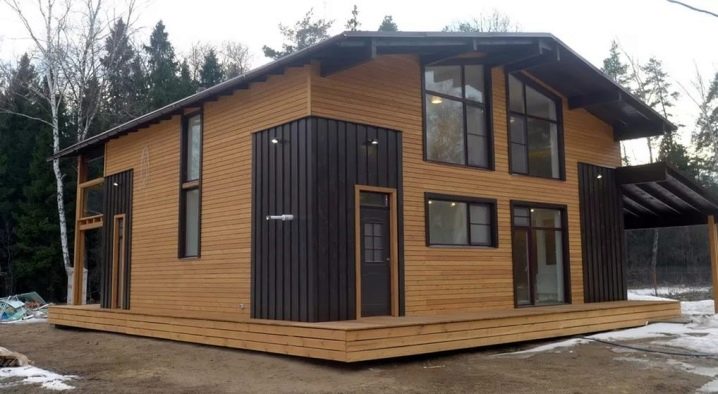
Provence
This style is most preferable for adherents of such natural facing materials as brick, ceramics, stone. Mainly the presence of light shades, in which the decor of the facade of the house is carried out. This finish is refreshed by a colorful, standout panel with a ceramic tile base. You can also decorate the facade using decorative plaster, overhead elements or painting.
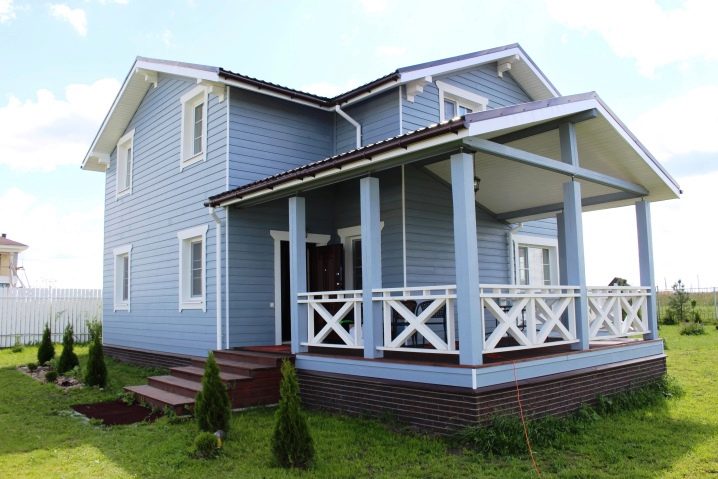
Scandinavian
The founders of this style are lovers of conciseness, the predominant absence of a prominent decor and the presence of uniformity. Thus, the Scandinavian style of installation is aimed at visually increasing the size of the space. This style is characterized by cladding materials such as wood, brick or masonry. Light and warm shades of colors and lack of contrasts are suitable for Scandinavian style.
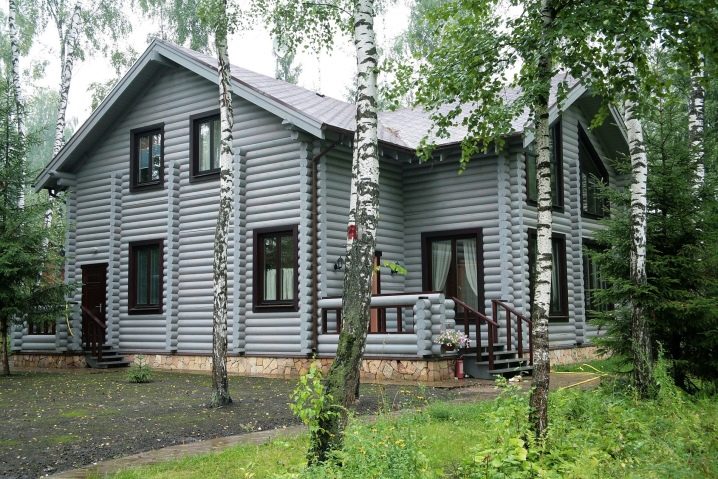
High tech
This style is characterized by a modern origin, it focuses on the use of various modern building technologies, assuming maximum convenience. The high-tech style is characterized by an extensive use of glazing in combination with various geometric shapes.
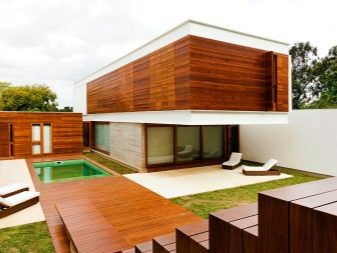
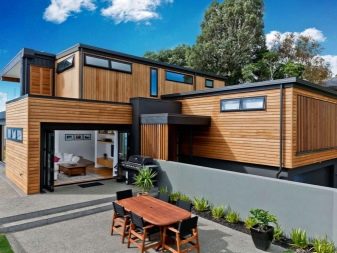
European style
The world architectural art is dominated by a considerable number of various styles of design, including characteristic features from the Gothic and Byzantine trends.Both in Western countries and in Russia, Gothic styles and designs that came from the Middle Ages are especially popular and in demand. The trend of combining the Gothic style with any other is popular. This style is characterized by difficulties in the installation of the facade.
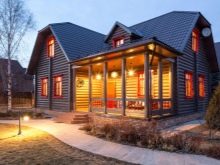
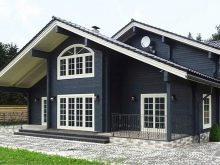
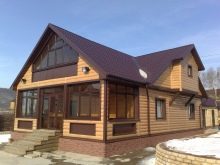
In addition to the above styles, there are others, each of which has its own characteristics and practical aspects, namely:
- avant-garde;
- country;
- colonial;
- classic;
- minimalism.
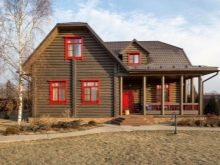
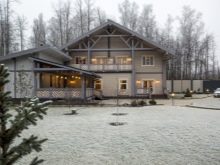
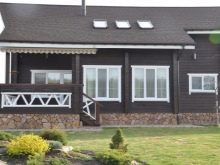

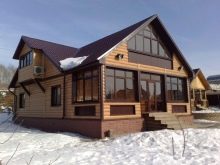

Very interesting and original design solutions can be obtained as a result of the correct combination of two or more styles of facade decoration. Today, there is an opinion among designers that the most original and unusual design can be obtained through a combination of a modern "chalet" with some additions to the classic style.
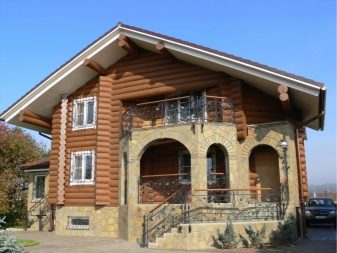

For information on how to clad a wooden house with siding, see the video below.













The comment was sent successfully.